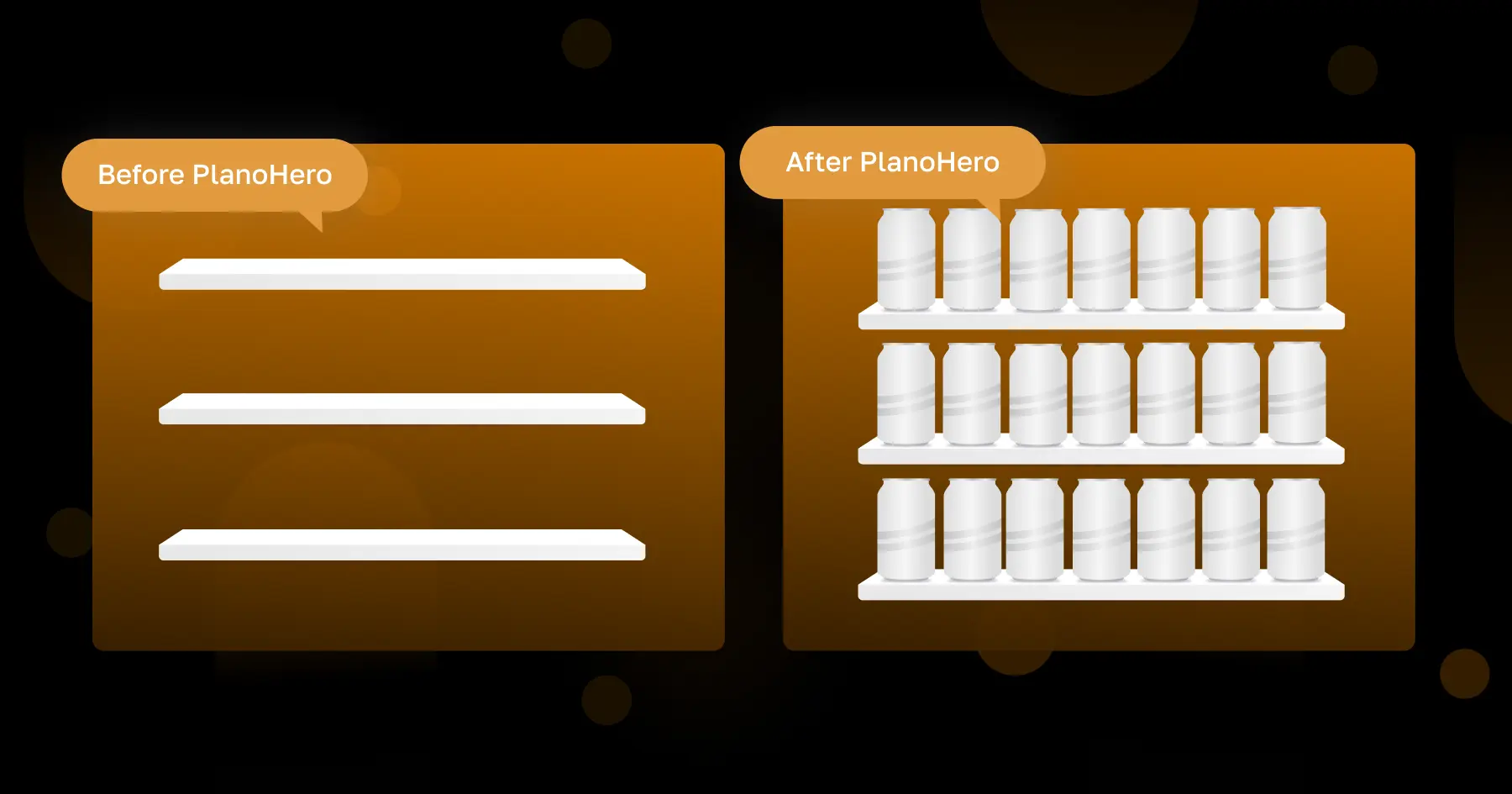Globalna branża detaliczna przeżywa kryzys spowodowany niestabilną sytuacją polityczną na świecie, niedoborami towarów i wysoką inflacją. Detaliści szukają sposobów na optymalizację procesów w celu oszczędzania zasobów, generowania zysków i przyciągania klientów.
Aby poprawić wydajność i produktywność każdego sklepu, sieci powinny zacząć od optymalizacji asortymentu: planowania i zarządzania asortymentem towarów. Planowanie asortymentu produktów w handlu detalicznym to połączenie najlepszego sposobu optymalizacji wyboru i ilości produktów, a także merchandisingu i ekspozycji w sklepie.
Czym jest asortyment?
Asortyment to zestaw produktów oferowanych przez firmę lub sieć. Aby uniknąć chaosu i błędów, sprzedawcy detaliczni tworzą matrycę asortymentową z pełną listą asortymentu sklepu. Matryca asortymentu to dokument w formie tabeli, który pokazuje asortyment produktów sieci i zawiera informacje o charakterystyce asortymentu.
Czym jest planowanie asortymentu?
Planowanie asortymentu w handlu detalicznym to proces wyboru i optymalizacji produktów, które detalista planuje sprzedawać w określonym czasie w celu osiągnięcia zysku. Proces ten obejmuje również poprawę merchandisingu ekspozycyjnego i efektywne planowanie sklepu.
Planowanie asortymentu towarów pomaga sieciom określić, jakie produkty oferować klientom, aby wiedzieć, jakie produkty klienci będą kupować i jak będą wchodzić w interakcje z towarami. Chodzi o upewnienie się, że planowanie asortymentu produktów uwzględnia wszystkie potrzeby klientów i ma odpowiednie produkty w magazynie. Jest mało prawdopodobne, abyś mógł mieć wszystko na stanie, więc powinieneś zoptymalizować i zaplanować swój asortyment, aby zaoszczędzić koszty i zmaksymalizować zyski.
Zaplanowana strategia asortymentowa pomoże sprzedawcom detalicznym zobaczyć całościowy obraz tego, jakie towary są sprzedawane, w jakich ilościach i gdzie. Właściwe planowanie umożliwi lepsze prognozowanie popytu i przyszłej sprzedaży oraz optymalizację zapasów.
! Ważne
Optymalizacja asortymentu NIE polega na kupowaniu dodatkowych zapasów.
Optymalizacja asortymentu w handlu detalicznym obejmuje:
- prognozowanie popytu na towary i zrozumienie, w jaki sposób można nim zarządzać;
- określenie, które produkty należy dodać lub usunąć z matrycy asortymentowej;
- jak i gdzie umieszczać produkty - optymalizacja merchandisingu wizualnego i rozmieszczenia na półkach.

Zalety optymalizacji asortymentu produktów dla sieci sklepów
Właściwie ukształtowana matryca asortymentowa pozwoli:
- zwiększyć sprzedaż sieci nawet o 20%;
- zapewnić wzrost zakupów impulsowych o 40 proc;
- zwiększyć współczynnik konwersji nawet o 35 proc;
- zwiększyć średni czek o 1,5 raza;
- uzyskać wyższą marżę zysku.
Planowanie i optymalizacja asortymentu produktów
Krok 1: Ustalenie kluczowych wskaźników efektywności
Jakie wyniki planujesz uzyskać dzięki optymalizacji asortymentu produktów?
Ustalenie celów pomoże zharmonizować pracę, przypisać obowiązki i zmierzyć wyniki.
Głównymi wskaźnikami KPI planowanej strategii asortymentowej mogą być:
- współczynnik konwersji;
- wielkość sprzedaży;
- zysk.
Możliwe KPI dla każdej kategorii/SKU:
Efektywność kosztowa
- Całkowity obrót na sieć;
- Średni obrót na sklep dziennie/tygodniowo;
- Zysk i marża;
- Średni czek.
Wyjątkowość
- Udział jednostek SKU;
- Średnia liczba jednostek SKU na klienta.
Koszt zawartości
- Koszty logistyki;
- % strat i odpisów;
- Dostępność resztek i brakujących zapasów.
Cele strategiczne
- Strategicznie ważne parametry produktów (lokalne, organiczne, wegańskie itp.).
- Zalety produktu w strategicznych grupach klientów (klasa wyższa, średnia, pokolenie Y).
Przed ustaleniem celów należy zbadać i przeanalizować dotychczasową sprzedaż, zidentyfikować najpopularniejsze produkty, zrozumieć potrzeby klientów.
Krok 2: Zdefiniowanie kategorii produktów i ich hierarchii
Podziel asortyment produktów na duże kategorie i mniejsze podkategorie. Uporządkuj je według artykułów w systemie księgowym sieci. Zdefiniuj hierarchię produktów znaną jako drzewo decyzyjne klienta. Są to kryteria używane przez klientów do oceny produktów i podejmowania decyzji zakupowych.
Właściwa optymalizacja asortymentu powinna uwzględniać tę hierarchię i prowadzić klientów do podjęcia decyzji o zakupie. Poświęć czas na analizę każdej kategorii online i upewnij się, że oferujesz produkty z każdej z nich.
Krok 3: Określ szerokość i głębokość asortymentu
Sprzedawcy detaliczni muszą określić liczbę produktów sprzedawanych w każdym klastrze. Szerokość asortymentu odnosi się do liczby kategorii, podczas gdy głębokość asortymentu odnosi się do różnych odmian i pozycji produktów w danej kategorii. Aby przyciągnąć więcej klientów, ważne jest znalezienie równowagi między szerokością i głębokością.
W praktyce sprzedawcy detaliczni starają się dotrzeć do szerokiego grona potencjalnych odbiorców, stąd też w ich asortymencie znajduje się szeroka gama produktów. Jednocześnie można również dodać głębię produktu. Z tej opcji korzystają zazwyczaj sklepy specjalistyczne.
Sklepy odzieżowe, jubilerzy, sklepy ze zdrową żywnością i suplementami prawdopodobnie oferują szeroką gamę produktów i różnorodność produktów w ramach swojej strategii asortymentowej.
Kupujący chcą mieć wybór, więc dodanie większej głębi do planowania asortymentu produktów może pomóc przyciągnąć dodatkowych kupujących.
Krok 4: Grupowanie
Klastry sklepów to grupy sklepów oparte na wspólnych cechach: lokalizacji, wielkości, typie, demografii klientów, wielkości sprzedaży. W oparciu o te wspólne cechy można przeprowadzić optymalizację asortymentu dla wszystkich sklepów w klastrze. Ułatwi to zarządzanie asortymentem, zaoszczędzi czas, zlokalizuje asortyment i osiągnie lepsze wyniki.
Krok 5: Visual merchandising
Zaprezentuj swój asortyment w najbardziej atrakcyjny sposób dzięki merchandisingowi wizualnemu. Piękna ekspozycja przyciąga uwagę klientów i motywuje ich do dokonywania zakupów. Skuteczny merchandising to przemyślana ekspozycja towarów w sklepie w celu zwiększenia widoczności produktów i sprzedaży. Towary są układane zgodnie z pewnymi zasadami i strategiami, których należy przestrzegać i którymi należy zarządzać. W tym celu merchandiserzy wykorzystują planogramy - szczegółowe schematy rozmieszczenia towarów na sprzęcie handlowym w sklepie. Planogramy są tworzone w specjalnych programach, w których można wirtualnie rozmieścić towary na półkach i wysłać plan układu do sklepu w celu wykonania. Usługa PlanoHero do pracy z planogramami pomoże w stworzeniu planogramu, ustawieniu efektywnej ekspozycji produktów, pozwoli na rotację i zarządzanie asortymentem towarów.
Krok 6: Przeprowadzenie analizy ABC-XYZ
Analiza ABC i analiza XYZ to skuteczne i proste narzędzia, które pomogą Ci ocenić asortyment produktów Twojej sieci.
Analiza ABC ocenia wkład każdego produktu w sprzedaż sieci, podczas gdy analiza XYZ ocenia stabilność sprzedaży według produktu lub grupy produktów.
Analizy te tworzą macierz kategorialną według różnych wskaźników: obrotu, liczby sprzedaży, zysku, stabilności sprzedaży itp. W ten sposób sieci mogą zrozumieć wartość każdego SKU dla sklepu i stworzyć skuteczną politykę asortymentową.
Zarządzanie asortymentem w czasie rzeczywistym! Szybka analiza danych w czasie rzeczywistym jest ratunkiem dla sprzedawców detalicznych i marek. Pomaga to w planowaniu asortymentu i pozwala natychmiast zrozumieć wpływ zwiększenia lub zmniejszenia ilości niektórych produktów w asortymencie.
Dane historyczne są bardzo ważne dla analizy każdej strategii asortymentowej, planowania zapasów i ustalania nowych celów. Z pomocą analityki handlu detalicznego łatwo jest zarządzać asortymentem, monitorować zmiany cen i ich wpływ na sprzedaż towarów.
Gdy asortyment jest już ustalony i gotowy do użycia, pozostaje tylko monitorować ceny i dostosowywać je w oparciu o niedobór produktów, ceny konkurencji i dostępne zapasy. Korzystając z platformy analitycznej Datawiz BES, można szybko analizować dane, uzyskiwać ważne informacje na temat przychodów oraz różnych kategorii i wskaźników wydajności sprzedaży dla każdego SKU.
Krok 7: Cross Merchandising
Cross merchandising to wykorzystanie dodatkowych układów do sprzedaży krzyżowej powiązanych produktów w ogólnej kategorii. Jest to skuteczna taktyka, ponieważ obejmuje ukierunkowaną promocję w sklepie w oparciu o podobieństwa produktów.
Nie wiesz, które produkty umieścić obok siebie? Przeanalizuj koszyki swoich klientów, aby zrozumieć, co kupują najczęściej i z czym.
Cross merchandising to świetny sposób na zwiększenie średniej wartości transakcji poprzez przypomnienie kupującym o produktach, których zapomnieli kupić lub wywołanie potrzeby zakupu. Cross merchandising oferuje kupującym dodatkowe opcje w oparciu o podobne produkty, które lubią.
Krok 8: Towary sezonowe
Posiadanie asortymentu sezonowego to świetny sposób na przyciągnięcie uwagi kupujących bez względu na porę roku. Artykuły sezonowe pozwalają sprzedawać przez cały rok i osiągać zyski. Weź pod uwagę artykuły sezonowe podczas optymalizacji asortymentu produktów. Przeanalizuj poprzednie sezony i zidentyfikuj popularne produkty, aby lepiej zrozumieć sytuację.
Wnioski
Planowanie i optymalizacja asortymentu są ważne dla wydajnej sieci. Istnieje wiele różnych podejść, które może przyjąć sprzedawca detaliczny. Ważną rzeczą do zapamiętania jest to, że nie trzeba zajmować się wszystkim naraz. Zamiast tego należy skupić się na głównych celach i zaplanować asortyment, który przyniesie najwyższy zwrot z wydanych zasobów. Skorzystaj z rozwiązań upraszczających i automatyzujących procesy biznesowe oraz generujących przydatne informacje. Skonfiguruj wysokiej jakości analitykę danych i skuteczny merchandising
Szukasz oprogramowania tworzenia planogramów?
Wypróbuj bezpłatną wersję demonstracyjną PlanoHero





